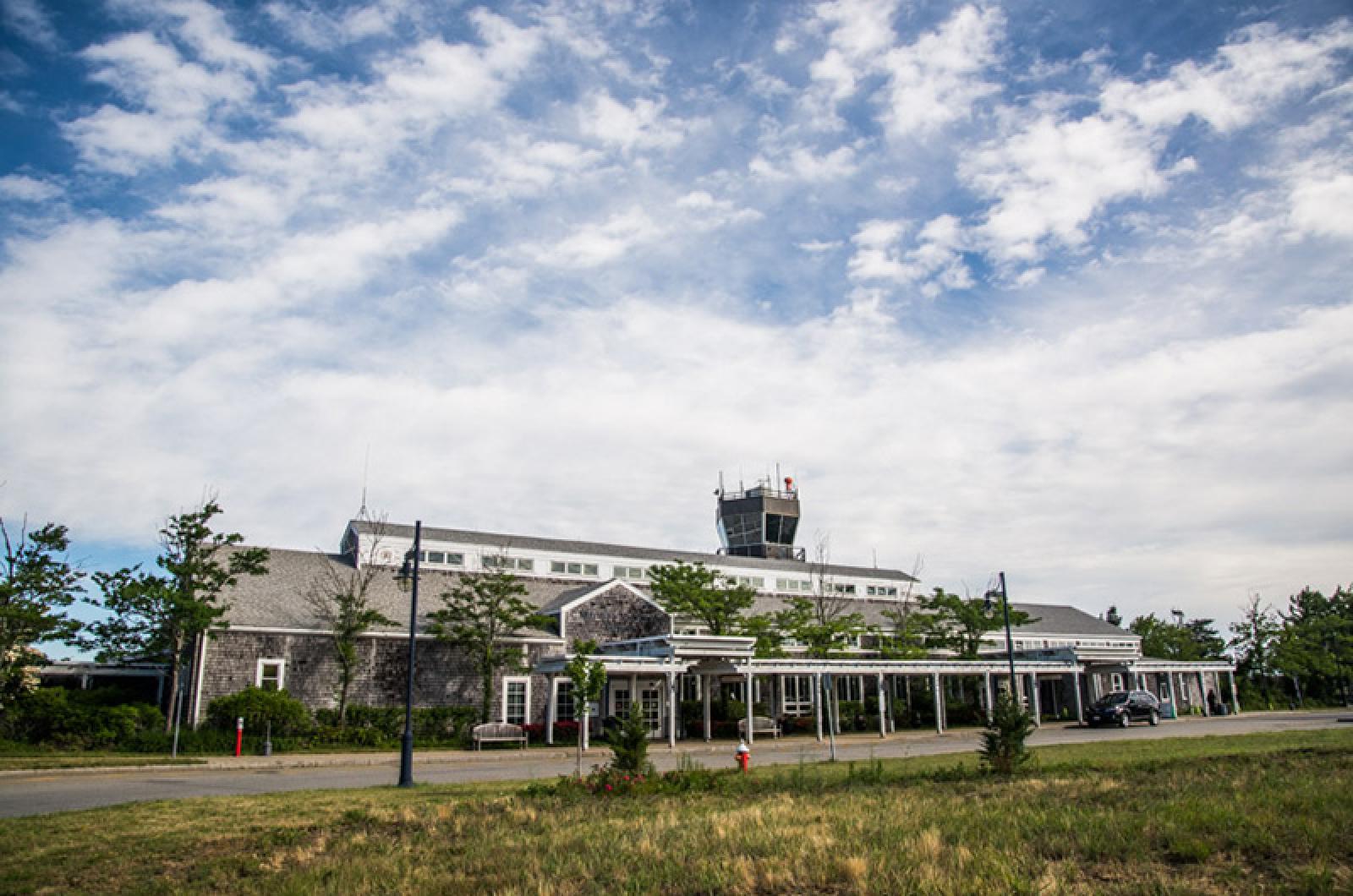This story was updated to reflect the rescheduling of the MEPA meeting from Jan. 16 to Jan. 31 at 5:30 p.m. in the airport terminal.
A proposed $39.7 million redevelopment and expansion plan for the Martha’s Vineyard Airport will get its first public airing Wednesday when the aiport commission meets to discuss a timeline for the project.
The proposal would alter about 118 additional acres of land in and around the airport, 20 acres of which are rare species habitat, and add 17.4 acres of impervious surface, according to a notice from the Massachusetts Environmental Policy Act (MEPA) office. Any proposal involving the alteration of more than 50 acres of land and the creation of more than ten acres of impervious area must by law be reviewed by MEPA.
The airport’s plans include renovating and expanding runways, more than doubling the size of the terminal building, constructing additional aircraft hangars for private jets and charter planes and adding 549 new parking spaces. The work would be done in phases over four years, beginning in 2020, according to a summary filed with MEPA.
MEPA officials had scheduled a public consultation session for Wednesday, Jan. 16 but rescheduled the meeting for Thursday, Jan. 31 at 5:30 p.m. in the airport terminal “to receive advice and comments from agencies, officials and citizens regarding which environmental issues, if any are significant for this project,” according to the hearing notice. The deadline for submitting additional comments on environmental issues is Feb. 12.
The regularly scheduled airport commissioners meeting will take place Wednesday, Jan. 16 at 4 p.m. in the airport’s conference room, and the public is welcome to attend to hear more about the project, said airport director Ann Richart in an email.
The project will also require a Conservation and Management Permit from the Natural Heritage and Endangered Species Program and is receiving about $27,000 in funding from MassDOT for environmental studies.
According to the airport’s 2016 Master Plan, the airport has documented some two dozen species, including of plants, birds and insects, that are considered threatened, rare or endangered by the state.
Ms. Richart first announced the airport’s capital improvement plans in August, telling airport commissioners that she had applied for $6 million in Federal Aviation Administration grant funding to cover phase one design and permitting costs for a project.
In an interview this week, Ms. Richart said the airport has yet to hear whether the grant application has been approved.
“We’re hoping to hear back anytime,” she said.
If the $6 million is approved, Ms. Richart said the airport would apply for an estimated $33.7 million in federal grant money to cover construction costs. The funding would come from a $1 billion FAA omnibus bill passed last spring for small airports and their infrastructure projects.
“The projects are 100 per cent dependent on federal funding,” she said.
The airport summarized nine projects falling under the airport’s capital improvement in an Environmental Notification Form (ENF) filed with the MEPA, an agency within the state Executive Office of Energy and Environmental Affairs.
The projects include renovating two runways, removing and reconstructing a taxiway and paving and expanding several areas to improve safety and to better accommodate parked aircraft. A new aircraft hangar would be constructed to house large corporate aircraft and four existing hangars would be taken down and replaced by up to three larger ones. The fueling area would be paved, and the terminal building would be expanded from 9,800 to 21,850 square feet. The number of parking spaces would be increased from 369 to 918. The plan also includes adding a right turn lane exiting Airport Road.
Much of the proposed work on the runways and taxiways are described as necessary to address safety concerns, while other projects are described as critical to meeting current or projected demand and to relieve traffic congestion.
For example, the airport said it has current demand for a new tenant interested in leasing a 15,900-square-foot hangar to base their aircraft at the airport. “Hangars are necessary because they protect aircraft from harsh weather elements and ensure aircraft readiness,” the report said.
The increase in terminal space is justified in part by the need to address TSA security requirements.
“Current conditions lead to long security lines and holding areas in open courtyards with no restrooms or other facilities,” the summary said.
In a section of the MEPA form that asks about whether alternatives were considered, the airport said that not expanding the terminal would result in continued long security lines and vehicle congestion and that “no alternatives were studied as a smaller expansion would not meet projected need and a larger expansion would not be needed. The proposed parking and roadway improvements may be phased based on demand and need.”
The airport’s 2016 master plan update noted that between 2000 and 2013, there was an average of 51,151 flights into and out of the airport, about half of which occurred between June and August. However, FAA statistics show the airport has averaged less than 50,000 takeoffs and landings per year in the last five years. In 2017, there were 49,767 passenger boardings recorded, down eight per cent from the year before and 30 per cent less than in the peak year of 2000.
Written comments about the potential environmental impacts of the project may be submitted by Feb.12 to the Secretary of Energy and Environmental Affairs, MEPA Office, 100 Cambridge Street, Suite 900, Boston MA 02114, or emailed to alexander.strysky@mass.gov. The identification number for the airport project is 15964.
PDF:15964marthasvineyardairportcapitalimprovementplanprojects-01.pdf







Comments (39)
Comments
Comment policy »